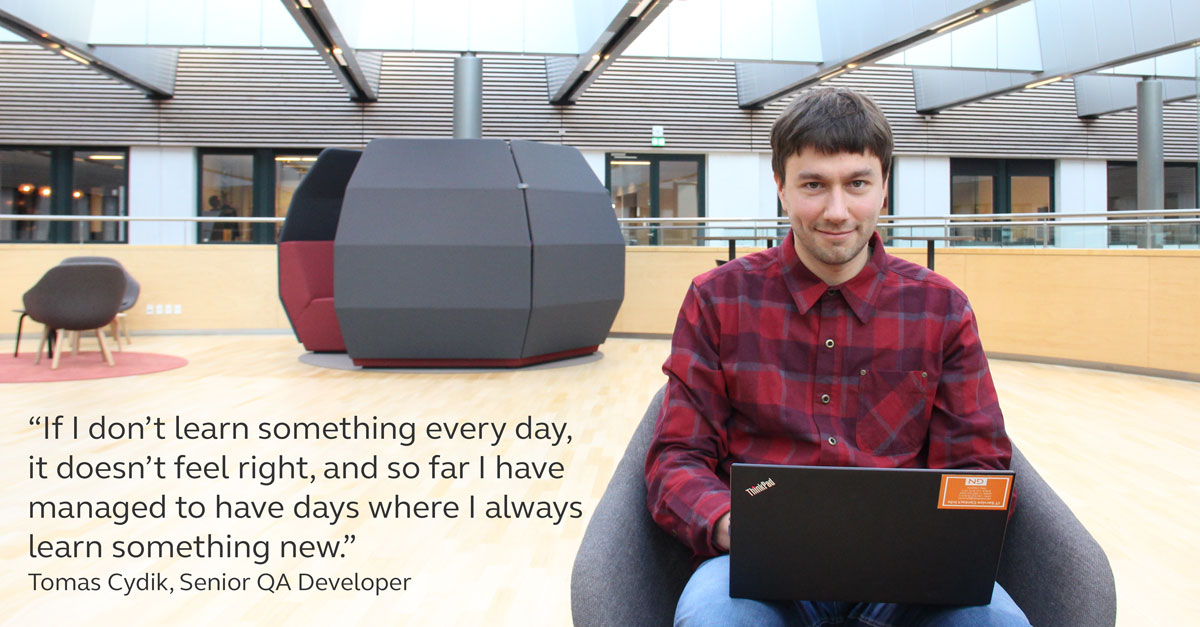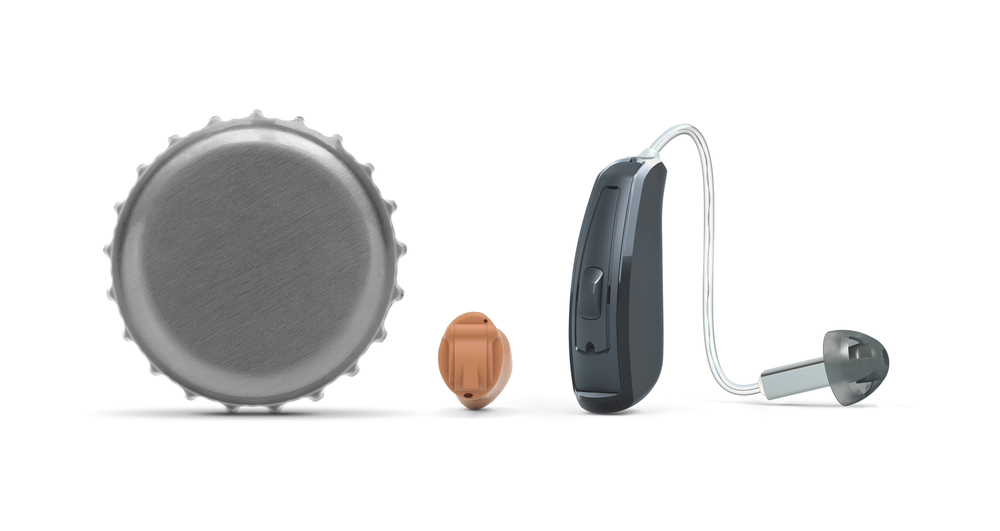Going Agile, learning every day, and doing something good: inside a GN engineer’s world
GN News
May 04, 2020
While many markets and industries have hit pause, the engine room in GN’s R&D has never been busier. The work of developing and testing our hearing aids and headsets forges ahead, so that new solutions reach customers as quickly as possible.
Before the corona-chaos hit, Tomas Cydik, Senior QA Developer, shared a little about his piece of the innovation puzzle, including what it means to go Agile in a 150-year old company, what motivates him about his role, and automation in his field.
How long have you been with GN, and what is the importance of your role?
About 4 ½ years ago I began working in (GN’s headset business) GN Audio as a software test coordinator. A couple of years later I had a chance to move across to (GN’s hearing aid company) GN Hearing as a Quality Assurance (QA) engineer where I could focus more on the technical side of development and go more into the details.
Basically, as a test engineer I test the software in our hearing aids to make sure it meets all the requirements, it works properly, is safe and does what it is supposed to do.
What’s rewarding about being a QA Developer in the hearing industry?
I like that I get to learn a lot and go really deep into an area and become an expert.
“The most rewarding thing is when you come home and feel you’ve done something good.”
The most rewarding thing is when you come home and feel you’ve done something good. That could be as simple as automating something which is very cumbersome to do otherwise, or maybe it’s learning something new. If I don’t learn something every day, it doesn’t feel right, and so far I have managed to have days where I always learn something new.

I am also driven by the fact that I can see something physical in the market that someone is using. I can explain to a person “I did this”. I like the physical hardware aspect.
Because hearing aids are medical grade products, the development cycle may be longer than software apps, but in this environment, you get to learn a lot of new things and you have really experienced people around you.
The hearing aid is so small and there’s so much technology packed into it – it’s kind of crazy!

“The hearing aid is so small and there’s so much technology packed into it – it’s kind of crazy!”: A ReSound custom hearing aid and ReSound LiNX 3D are smaller than a bottle cap
You mentioned automating otherwise cumbersome processes. How do you automate in your work and what benefits have you seen?
It’s a balance, but ideally every test that we do manually we would like to automate.
What it means is we have a framework that interfaces with the hearing aid, and we write our own code around it, down to even a simple button press which we can code.
In general automation saves time and helps find errors more quickly. If you receive some software to test, if you have automation, you run everything. If you do it manually, you would probably try to focus on one area which is affected by the recent development changes, but then you might miss other things in other parts of the software, which the automation would have found. You might catch a really far away side effect, which you wouldn’t have found manually.
Related: Read about automation on GN’s production line in Why we should welcome our robot co-workers
The User Software team was one of the first teams to go Agile in GN Hearing. How has that changed and challenged an R&D team with such a long history?
It means we have to be very focused during the sprints. There were definitely challenges in the beginning, but by working a lot on our communication, there’s now a good understanding in other teams within the company about how we work.
The main difference from our previous way of working, and I think this is a big benefit, is that we are all involved in the whole process and we share competencies. It means that across the whole two-week sprint, you’re there for design, concepting, and then the testing. So rather than just focusing on one phase of the project, you’re involved the whole way through, and therefore you understand it better, manage your time better, and can be more effective. It means I know where to look for possible defects and have less questions when I have to test it, because I am actually doing the design and having those discussions. As a result, we have less errors and the quality is higher.
“Rather than just focusing on one phase of the project, you’re involved the whole way through, and therefore you understand it better and can be more effective.”
Related: Read the interview with Thorkild Find Pedersen, Tomas’ colleague who led GN’s collaboration with Google in Developing with Google: An inside look at developing direct Android streaming to hearing aids

GN's R&D team gather as a group for a planning session every 3 months. They work in teams to estimate how long tasks will take, broken down into two-week "sprints"
The Agile way of working depends so much on regular, face-to-face interaction. How did you manage your work during the lockdown conditions?
Agile is designed for teams to be co-located, where you hear everything going on around you, can just shout out to ask questions at any time, and therefore you don’t miss any information which you might need later. So, shifting away from this to remote working presented some challenges for us in the beginning.
We found there was more coordination required, and this can mean more emails, which take up time. The way we solved this was by running an all-day online meeting in the background, so any time anyone has a question they can just unmute their headset and ask. I also started only checking emails in between tasks, to avoid context switching. Both these things really improved our performance.
The upcoming deadlines meant we had to act fast, so while it took some getting used to, using online collaboration tools and putting in some extra hours put us on track.
You can always be negative but that doesn’t help you. In the end it’s about how you see things. If you plan and put a positive hat on, everything can be done – that’s for sure.